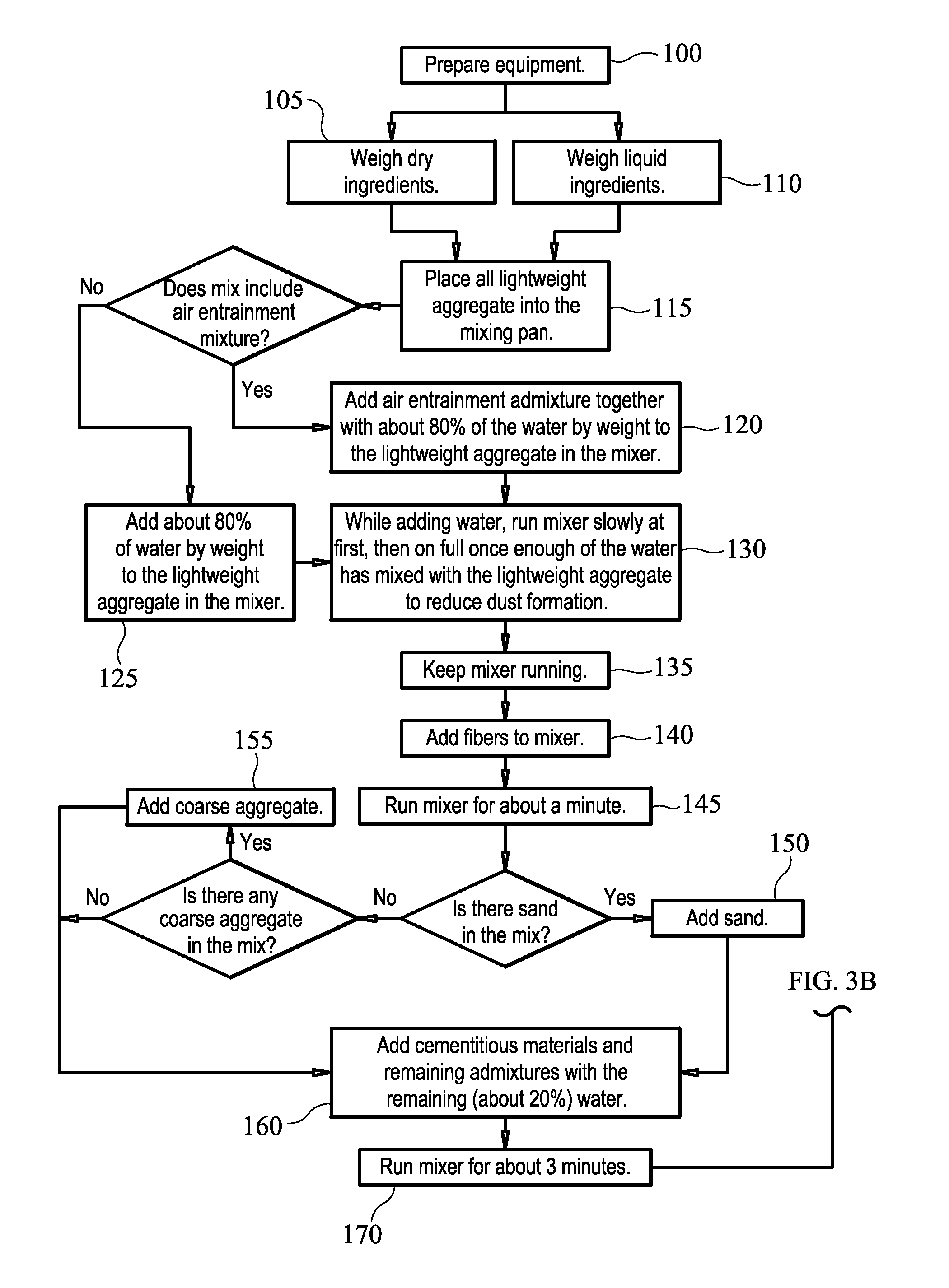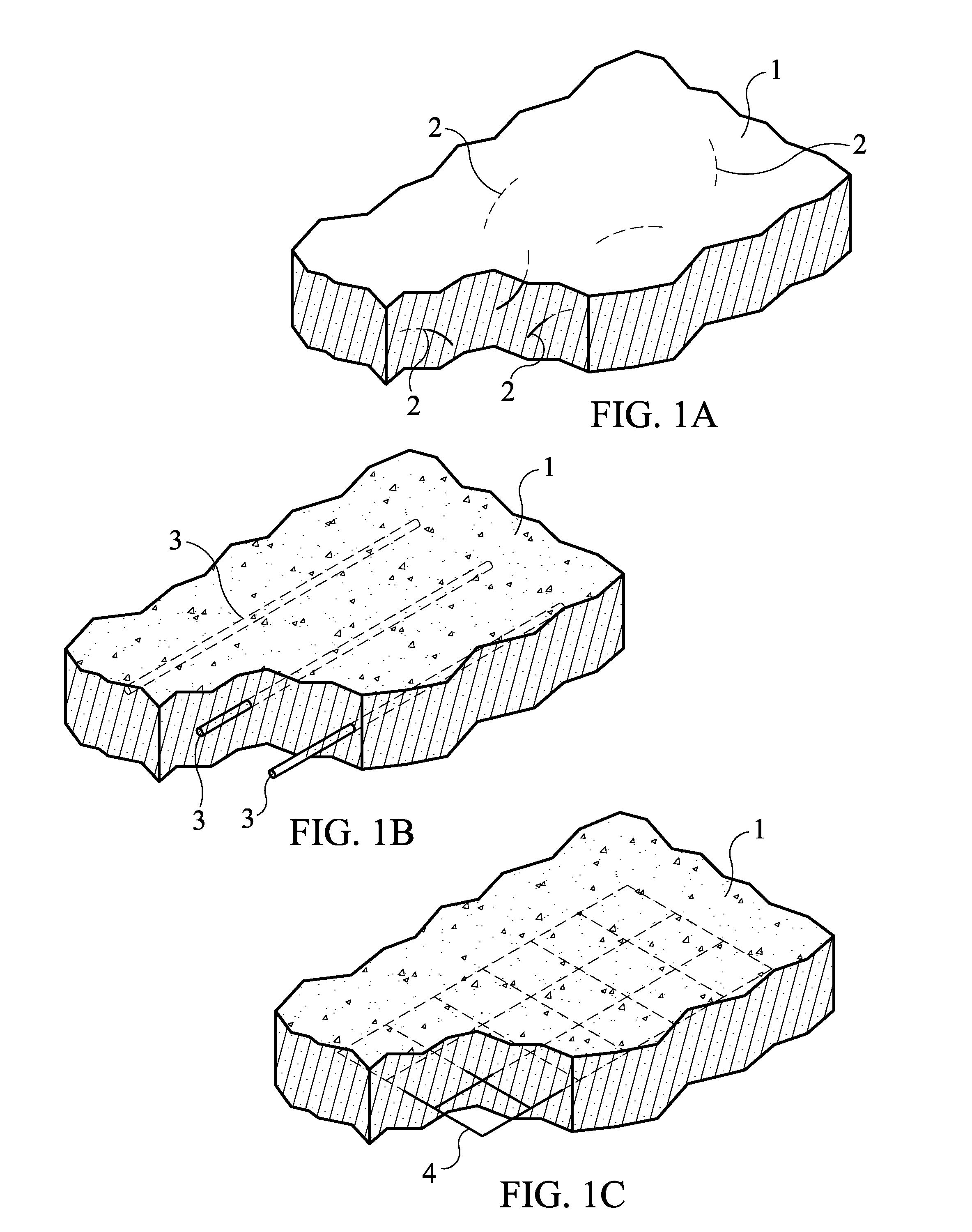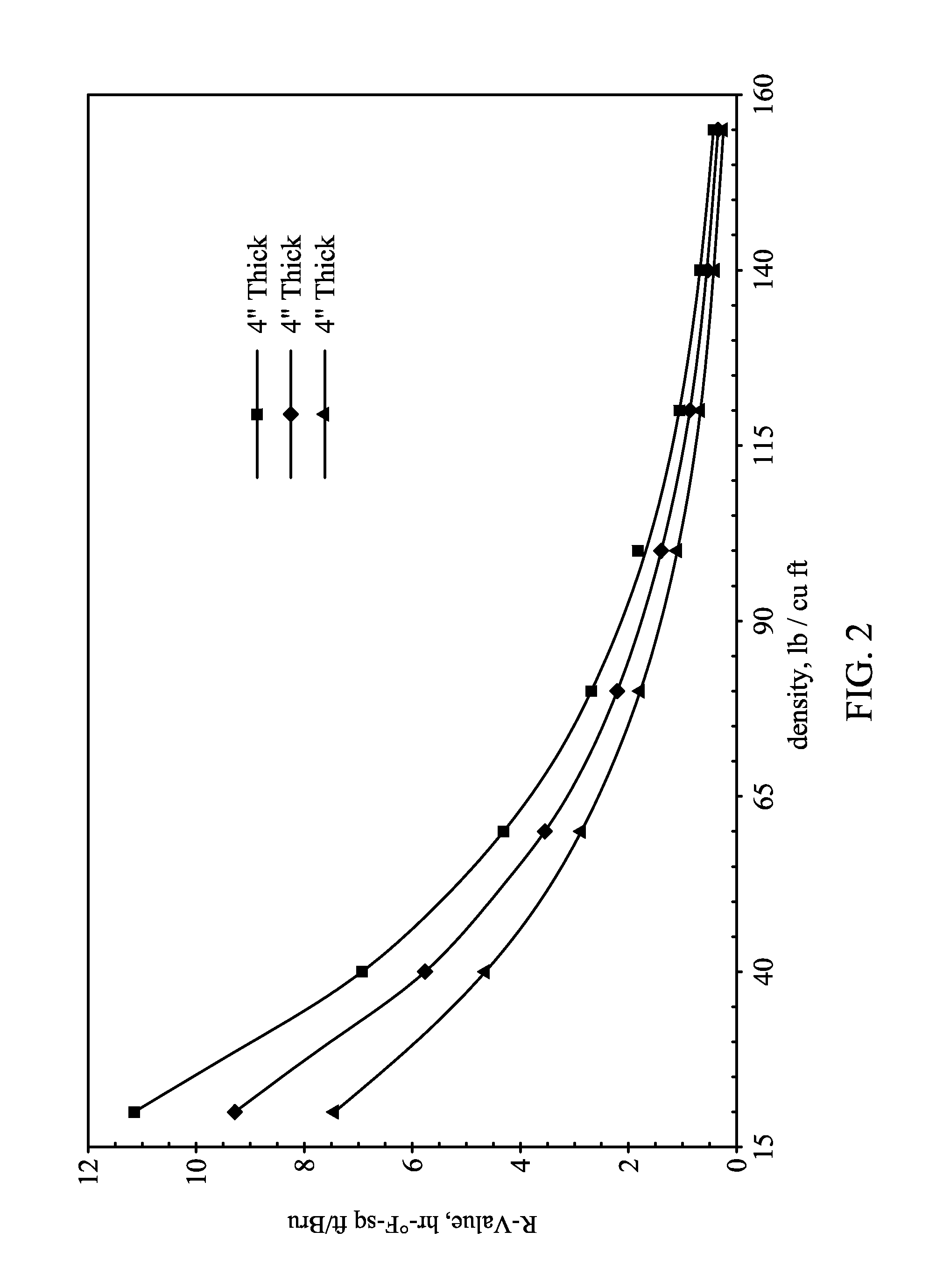Low-density high-strength concrete and related methods
a high-strength, concrete technology, applied in the direction of ceramicware, solid waste management, sustainable waste treatment, etc., can solve the problems of poor tensile strength, poor ductility, limited use or value of concrete as a building material, etc., to achieve high strength-to-weight ratio, low density, and good segregation resistance
- Summary
- Abstract
- Description
- Claims
- Application Information
AI Technical Summary
Benefits of technology
Problems solved by technology
Method used
Image
Examples
examples 1-7
Aggregate: SG 0.35 Microspheres
[0116]Concrete preparation and mixing was done in accordance with ASTM C192. The process is described in reference to FIGS. 3A-3B. First, all necessary equipment was prepared in step 100. Then the dry ingredients were weighed and thereafter the liquid ingredients (steps 105 and 110). All weights for Examples 1-7 are shown below in Table III (by weight) and Table IV (by weight percent). Paste content for Example 7 was estimated. Admixture amounts are fluid ounces per 100 lbs. of cementitious material. Then in step 115, all of the LWA was placed into the mixing pan 7 of a Hobart type pan mixer 6 (see FIG. 5B). This LWA was composed of 3M brand S35 glass microspheres having a SG of about 0.35, a median size of about 40 microns and a microsphere size distribution such that about 80% are between about 10-75 microns, and with about a crushing strength 90% survival rate at about 3000 psi. Then, if the mix included an air entrainment admixture, the air entrain...
examples 8-12
Aggregate: SG 0.15 Microspheres
[0119]Concrete preparation and mixing was done in accordance with ASTM C192. The process is described in reference to FIGS. 3A-3B. First, all necessary equipment was prepared in step 100. Then the dry ingredients were weighed and thereafter, the liquid ingredients (steps 105 and 110). All weights for Examples 8-12 are shown below in Table VIII (by weight) and Table IX (by weight percent). Admixture amounts are fluid ounces per 100 lbs. of cementitious material. Then in step 115 all of the LWA was placed into mixing pan 7 of a Hobart type pan mixer 6 (see FIG. 5B). This LWA was composed of 3M brand S15 glass microspheres having a SG of about 0.15, a median size of about 55 microns and a microsphere size distribution such that about 80% are between about 25-90 microns, and with about a crushing strength 90% survival rate at about 300 psi. Then, if the mix included an air entrainment admixture, the air entrainment admixture was added in step 120 together ...
examples 13-17
Aggregate: SG 0.35 / SG 0.15 Microspheres and Sand
[0122]Concrete preparation and mixing was done in accordance with ASTM C192. The process is described in reference to FIGS. 3A-3B. First, all necessary equipment was prepared in step 100. Then the dry ingredients were weighed and thereafter the liquid ingredients (steps 105 and 110). All weights for Examples 13-17 are shown below in Table XIII (by weight) and Table XIV (by weight percent). Admixture amounts are fluid ounces per 100 lbs. of cementitious material. Then, in step 115, all of the LWA was placed into mixing pan 7 of a Hobart type pan mixer 6 (see FIG. 5B). For Example 13, this LWA was composed of 3M brand S15 glass microspheres having a SG of about 0.15, a median size of about 55 microns and a microsphere size distribution such that about 80% are between about 25-90 microns, and with about a 90% crushing strength survival rate at about 300 psi. For the remaining examples, this LWA was composed of 3M brand S35 glass microsphe...
PUM
| Property | Measurement | Unit |
|---|---|---|
| compressive strength | aaaaa | aaaaa |
| compressive strength | aaaaa | aaaaa |
| density | aaaaa | aaaaa |
Abstract
Description
Claims
Application Information
 Login to View More
Login to View More - R&D
- Intellectual Property
- Life Sciences
- Materials
- Tech Scout
- Unparalleled Data Quality
- Higher Quality Content
- 60% Fewer Hallucinations
Browse by: Latest US Patents, China's latest patents, Technical Efficacy Thesaurus, Application Domain, Technology Topic, Popular Technical Reports.
© 2025 PatSnap. All rights reserved.Legal|Privacy policy|Modern Slavery Act Transparency Statement|Sitemap|About US| Contact US: help@patsnap.com



